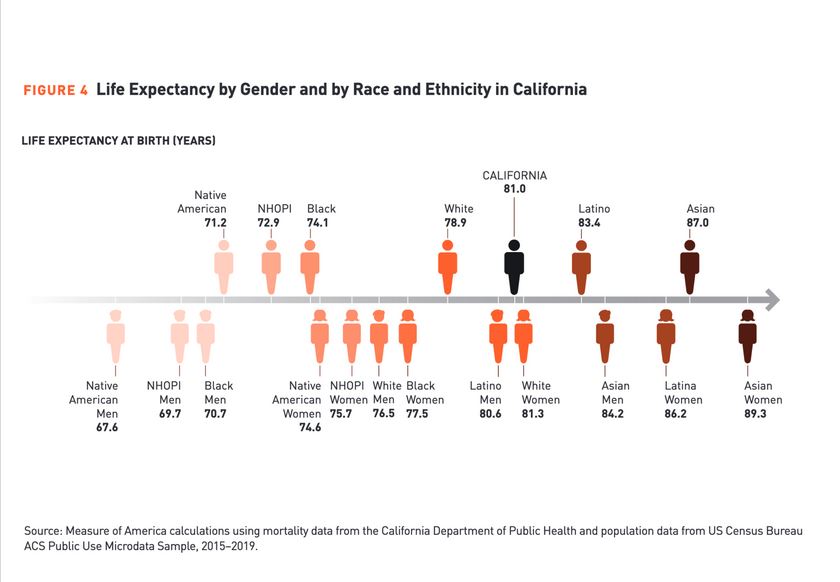By Rhiannon Koh, AsAmNews Contributor
The quality of life of Asian Americans in California improved overall, according to a 2021 report conducted by The Measure of America.
AsAmNews spoke with the project’s Director, Kristen Lewis, on issues affecting the state’s Asian American and Pacific Islander communities. Despite this overall improvement, Lewis noted a key fact.
“I think that one of the most striking findings we had was the disparity within Asian subgroups in California,” Lewis said.
The report — A Portrait of California 2021-2022: Human Development and Housing Justice — is the third study in a decade-long series that offers statistics and analysis of how Californians are faring in health, education, and earnings broken down by race, gender, and location. These factors are used to determine a Human Development Index (HDI) score.
LATEST STORIES
The HDI, an alternative to GDP and other money metrics, tells the story of how Americans are living and aims to empower communities with a tool to track progress over time. This methodology was pioneered by the United Nations and has been adapted by the Measure of America.
In California, the HDI score averaged 5.85. Asian Californians scored the highest with a 7.94. Lewis, however, cautioned against generalization. She explained, “When you disaggregate by Asian subgroup, which we’re able to do in California thanks to the advocacy of Asian American groups in the state, we’re able to then calculate scores for different groups. What we see when we separate Asian populations is this huge gap.”
Taiwanese Californians reign over the HDI chart with a score of 9.81. They are closely followed by Indians (9.38), then Chinese, Koreans, and Japanese who hover around the 8 range. Both Filipinos and Vietnamese surpass the California average, but the Cambodian, Hmong, and Laotian communities are well below the state’s average.
These numbers are reflective of the diverse circumstances in which Asians immigrated to the United States. While some called the country home as early as the mid-1800s, the Portrait of California report also acknowledged the stark differences between the “refugees carrying the trauma of war and displacement” and the “affluent elites in search of educational and economic opportunities.”

Looking at scores by only race and ethnicity revealed that of the state’s six major racial and ethnic groups, Latinx and Asian Californians (at large) experienced the most improvement in overall well-being.
The report also found that Asian workers earn just $600 less than white workers, and the differences between men and women follow a similar pattern. Like white men, Asian men earn disproportionately more than other groups, $59,900. While Asian men earn slightly less than white men, Asian women earn a bit more than white women, so the gap between genders is smaller. Asian women earn $0.75 for every dollar earned by Asian men.
Education, too, is generally viewed as an important determinant of health; Asian educational outcomes are the best among the major racial and ethnic groups. Asian women can expect to live the longest of any race and gender combination, an impressive 89.3 years on average. Health is the only component of the index where Asian women outpace men.

Lewis noted it wasn’t possible to provide life expectancy calculations for Pakistani and Thai Californians. Consequently, Lewis stressed the importance of recognizing the broad diversity within the AAPI community.
“One thing we really do want to emphasize is how critically important it is to disaggregate data by Asian American subgroup, by Native Hawaiian, and by Pacific Islander groups,” Lewis said. “It’s very easy to get the idea that everyone called ‘Asian Pacific Islander’ is doing great and so there’s no need for special programming, or there are no issues.
Lewis also prefaced the rise in anti-Asian violence, explaining how generalizing the AAPI community can perpetuate the myth of the ‘model minority.’
To learn more about The Measure of America and the work they do, consider visiting their website here.
AsAmNews has Asian America in its heart. We’re an all-volunteer effort of dedicated staff and interns. Check out our new Instagram account. Go to our Twitter feed and Facebook page for more content. Please consider interning, joining our staff, or submitting a story, or making a contribution.








